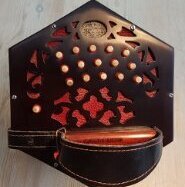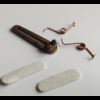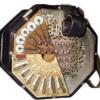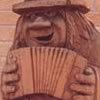-
Posts
5,163 -
Joined
Contact Methods
-
Website URL
http://www.concertina.com/chambers/
-
ICQ
0
Profile Information
-
Gender
Male
-
Interests
STEPHEN CHAMBERS had the misfortune to be stricken with the highly contagious concertina bug around the time he left school in 1970. He believes he caught it as a result of attending folk clubs in Derby and his native Burton-on-Trent, though he cannot rule out the malevolent influence of the "Concertina Consciousness" movement that was active at the time, not forgetting his becoming a member of the International Concertina Association at an early stage (as the result of an accidental meeting with ICA Secretary Jim Harvey on London's Battersea Bridge). In the early stages of the illness he rapidly progressed from simply listening to concertinas being played to seeking to have one of his own; an ambition he rapidly achieved with the purchase of an 1890s Wheatstone for £25 through an advert in the local newspaper, and his life has never been the same since. The progression of the bug to fully blown Concertina Acquisition Disorder, coupled with an interest in history and training as a librarian, has caused him to carry out research on the instruments murky past and to publish articles about it, but really he is only trying to mask the symptoms of his condition.
He is the author of "Louis Lachenal : Engineer and Concertina Manufacturer" Part 1, "An Annotated Catalogue of Historic European Free-Reed Instruments ... " (based on the instruments exhibited at the Symposium "Harmonium und Handharmonika", at Stiftung Kloster Michaelstein, in November 1999) and "Some Notes on Lachenal Concertina Production and Serial Numbers", which stands (in the interim) for "Louis Lachenal" Part 2.
All the above may now be viewed online, courtesy of Robert Gaskins, by clicking on the Home Page url below.
His latest paper "Joseph Astley, Oldham Concertina Band
and the MHJ Shield" was published in PICA (Papers of the International Concertina Association) Volume 4, 2007: http://www.concertina.org/archive/pica/pica_2007_4/pica4_2007_p31_44.pdf
Stephen is the present custodian of the first Wheatstone concertina (his avatar), which was formerly the pride of Wheatstone's own collection. It was shown, & described as such, in the 1961 Pathe Newsreel "Concertina Factory", or "Concert in a Factory"(which can be viewed online at: http://www.britishpathe.com/product_display.php?searchword=concertina+factory).
Recent Profile Visitors
11,478 profile views
Stephen Chambers's Achievements

Ineluctable Opinionmaker (6/6)
-
It looks the same as one I have listed/illustrated in my 1939 Hess, Klingenthal catalogue, described as a ,,Cromatic"-Konzertina, and I've seen similar examples that have a piano-system right-hand side, with a German-concertina diatonic left-hand side, just like it. It's late here now, but I'll scan, and post, the listing tomorrow.
-
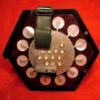
Mayfair 'English' Anglo
Stephen Chambers replied to Snedder's topic in General Concertina Discussion
It's something that's come up previously and was probably done with export markets in mind - to show that (though they have accordion reeds) these inexpensive models were made in England, and have English-style metal levers, not troublesome wooden ones like you'd find in German concertinas. Indeed I've known elderly players of the German concertina in Ireland who described the "new-fangled" Anglos as "English concertinas" because they were made in England. Whilst I've also come across a MayFair Anglo that was made for export to Gallo Record Company in Johannesburg, and branded "Gallotone / English Concertina / Engelse Konsertina" on it - common terms for the Anglo in South Africa... -
Octagonal
-
I was very sad to hear of Norman's passing on Facebook last night Stuart. I knew him in Edinburgh in the early'80s, and he very kindly lent me has flat to stay in then.
-
I have a suggestion on this topic, in that 19th-century English-made concertinas were commonly made half-a-semitone sharp of A-440, whilst German concertinas were commonly half-a-semitone flat of it - so a high-pitch B/F# Anglo would have been playable with a low-pitch German C/G... 🤔
-
I've only ever seen photos/films of Grock playing large Lachenal Edeophones, and that's what his instruments that are preserved in Swiss museums are. Tell me, what year was your Aeola baritone-treble made, and where was it found? (It might just help identify who played it, at some stage.) The pitch difference is only 20 cents, so it shouldn't be a problem to tune it up, but I am in a bit of a dilemma about doing it myself too - for the sake of originality if it really was Grock's.
-
In fact it's not such a "curious" pitch at all really, but an option that was available to order from English concertina makers - indeed I have a 48-key amboyna Edeophone in A-435 myself, that is said to have been made by Lachenal in the 1920s for the then-famous Swiss clown Grock. The pitch (or close to it) was already being used for operatic performances (at a time when orchestral performances were going ever-sharper) in France and Germany in the first half of the 19th century before, in 1859, the French government decreed that, by law, A=435Hz was in future to be the standard for musical performances, whilst other Continental European countries adopted it at an international conference in Vienna in 1885. This standard was known as the "Diapason Normal" (diapason is French for a tuning fork), but in English-speaking countries it was normally referred to as French Pitch, Continental Pitch, or International Pitch. It continued as Continental Pitch through the 1930s, and Hohner accordions from that decade are usually stamped "470" (German notation for A-435) on their reed-blocks if made for Continental countries, or "880" (A-440) if intended for export to Britain. Here's an interesting overview of the topic: A history of pitch standards in piano tuning
-
Here's something I've posted before that illustrates how big a problem pitch had become by the 1930s in Britain - it's a page from the 1936 catalogue of the musical instrument wholesalers Barnes & Mullins, showing that, by then, the Sheffield firm John Walker was manufacturing tuning forks in no less than six different pitches, but one of them was American Federation of Musicians, Universal Low Pitch A 440, which was already creeping into use in Britain through the popularity of American brass and woodwind instruments in the dance bands of the day. Whilst A-435 was also known under various other names in Britain by that time - Diapason Normal, Continental, Queen's Hall, U. S. A. Pianoforte Manufacturer's Association, 1891, or French Pitch.
-
Though Some of the old Jones Anglos had two thumb buttons...
-
I would seriously wonder, but conversion of Jeffries Anglos to Duets was rife at one time (my late friend Jim Harvey told me he got his 4-row Anglo converted by Jeffries' themselves, and I've two 39-key Anglos here at the moment that got keys added and converted to duets), and vice-versa, especially in more recent times. What intrigues me about this one is that it's octagonal.
-
Whoops, my bad! I knew that, but my finger must have slipped... I've researched and written about the Astleys from Oldham: Joseph Astley, Oldham Concertina Band and the MHJ Shield
-
Oh, very nice! From 9th November 1926, and there are lots more gorgeous de-luxe Wheatstone's on the same page too, including the tortoiseshell 72-key Maccann duet #31354 that I was told Kenneth Chidley had made for his wife, and passed through my hands some 40-odd years ago. Corrected mistyped date.
-
Which would seem to suggest that George Jones may have lost the Salvation Army contract before he retired at the age of 67 in 1899 (quite possibly around the end of February because he was a leap year baby, born on 29th February 1832) , or that a slight tweak of the data may be called for...
-

Can anybody ID this instrument?
Stephen Chambers replied to mike byrne's topic in Concertina History
It looks like it started life as a Lachenal, only it's had its action pivots and fretwork replaced. Its owner, and/or modifier, in 1899 appears to have been George Abel Lester (1872-1961) of Dover, Kent - who was (not surprisingly in the light of the framing work that's been done to the ends, or what appear to be screw-eyes for action pivots) a picture framer.- 1 reply
-
- 3
-



